Understanding the Role of Turn-Taking in Autism Therapy
Turn-taking is a fundamental social and communication skill that underpins successful interactions and relationships. For children with autism spectrum disorder (ASD), mastering this skill can be challenging yet is crucial for their social development and community participation. This article explores how applied behavior analysis (ABA) therapy supports the encouragement of turn-taking, presenting evidence-based strategies and the multidisciplinary approaches that foster social competence in autistic children.
What is ABA Therapy and How Does It Support Turn-Taking?
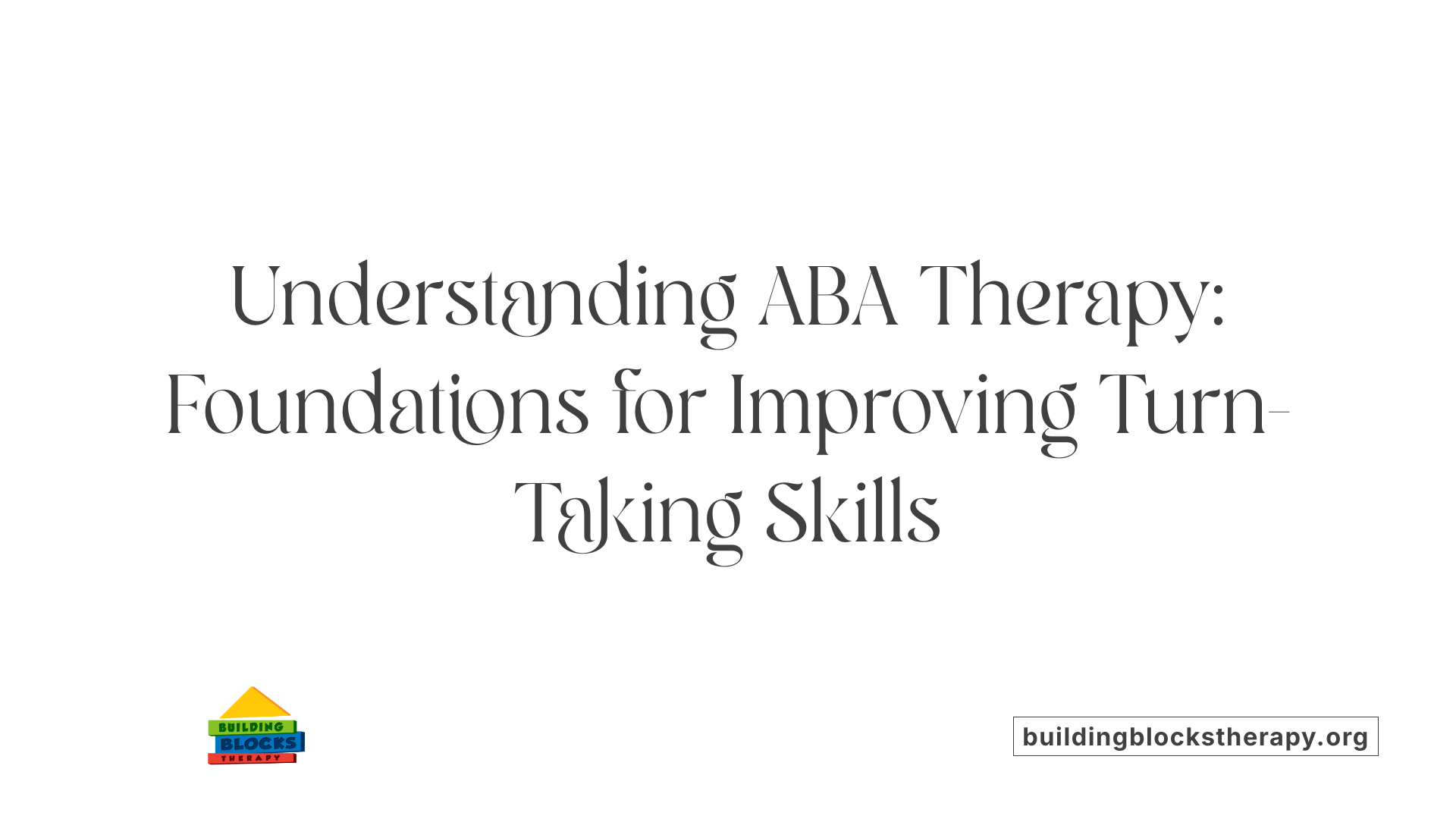
What is applied behavior analysis (ABA) therapy for autism?
Applied behavior analysis (ABA) therapy is a scientifically supported treatment designed to improve helpful behaviors and reduce challenging ones in individuals with autism spectrum disorder (ASD). It focuses on teaching functional skills like communication, social interaction, daily living, and academic abilities by analyzing the context surrounding behaviors—the antecedents, behaviors, and consequences (known as the A-B-C model).
Goals of ABA therapy
ABA therapy aims to increase a child's independence and ability to participate meaningfully in society. It does so by promoting behavior change through individualized programs tailored to each child's specific needs, which are developed with the oversight of qualified behavior analysts (BCBAs). The therapy includes teaching new skills and generalizing them across different environments, people, and materials.
How ABA individualizes treatment
Each ABA program is based on thorough assessments and may involve varying therapy hours, combining structured teaching with naturalistic approaches embedded in everyday routines. Emphasis is placed on reinforcing attempts, using visual supports, and fading prompts to foster independence.
Use of positive reinforcement
A core principle of ABA is positive reinforcement, which encourages repetition of desired behaviors by rewarding them, such as praising successful communication or social interaction attempts. This approach strengthens skills like turn-taking and polite communication across multiple settings.
Focus on social and communication skills
ABA supports social development and communication by breaking down complex skills like turn-taking into manageable steps. Strategies include modeling behaviors, using simple language cues like "my turn" and "your turn," incorporating visual aids such as pictures or timers, and integrating play activities to practice these skills naturally. This systematic teaching helps children with autism understand and engage in social exchanges effectively, promoting reciprocity and patience essential for social competence.
The Benefits of ABA Therapy for Social Skills Development
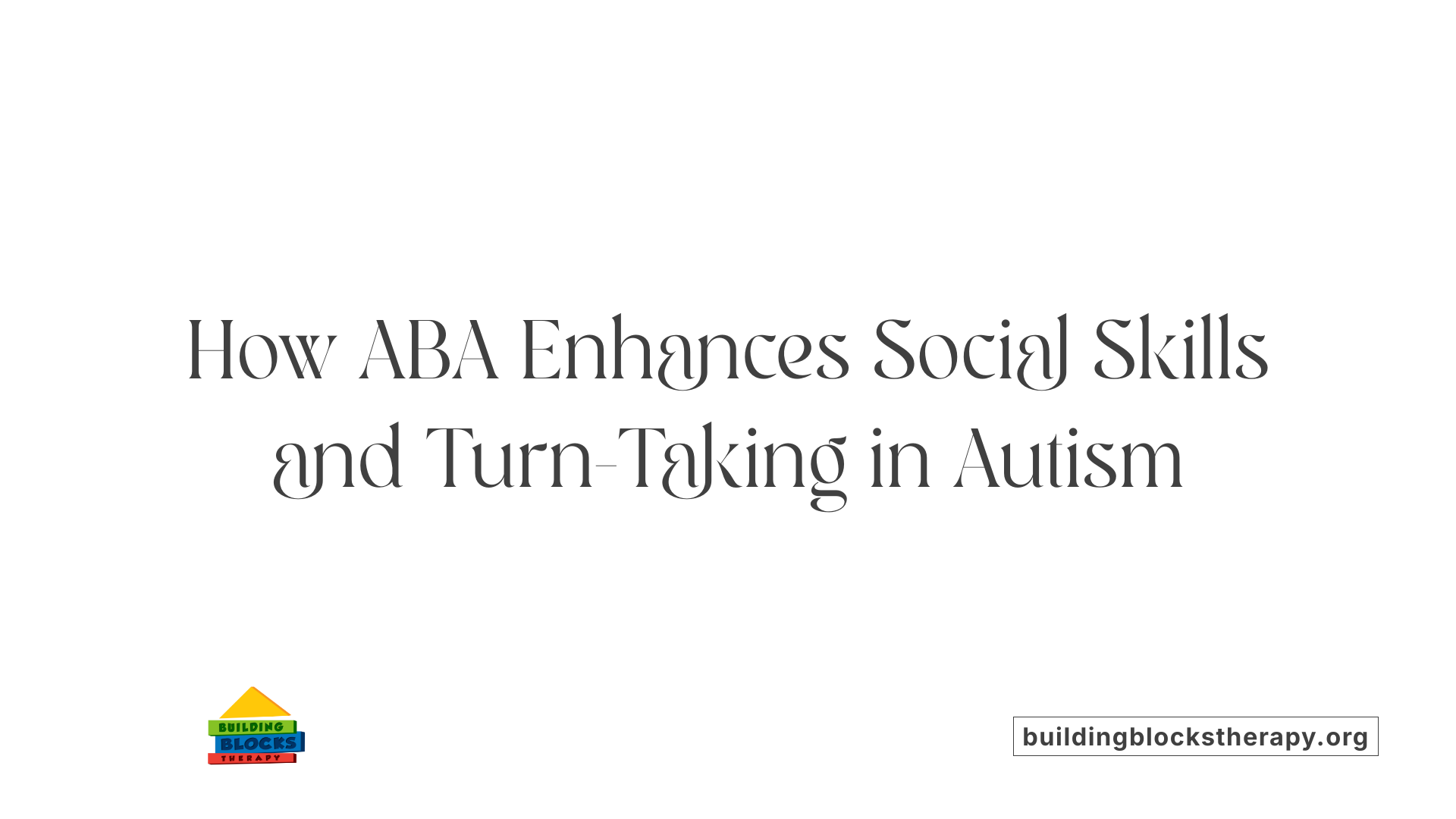
How does ABA therapy benefit individuals with autism?
Applied Behavior Analysis (ABA) therapy offers numerous benefits for individuals with autism, fundamentally enhancing social interaction skills, communication, and self-care. By using evidence-based techniques such as positive reinforcement, ABA promotes desirable behaviors while reducing disruptive ones. This structured, individualized approach is tailored to meet the unique needs and goals of each person under the guidance of trained professionals like board-certified behavior analysts.
Improvement in social interaction skills
ABA therapy supports the development of social skills by teaching crucial components such as turn-taking, empathy, and recognizing non-verbal cues. Using social stories, visual aids, and supported peer interactions, it helps children with autism navigate social situations more effectively. Group activities like structured lunch groups and playdates reinforce these skills by creating natural opportunities for engagement and communication.
Role in communication and self-care
Communication is a key focus in ABA therapy, utilizing strategies like the Picture Exchange Communication System (PECS), sign language, and voice output devices to facilitate expression. Reinforcing attempts at communication, simplifying language, and embedding learning in daily routines allow for smoother skill generalization. Additionally, ABA explicitly teaches self-care and daily living skills, fostering independence through consistent routines and visual schedules.
Increased independence and early intervention outcomes
By targeting daily living skills, safety awareness, and community involvement, ABA therapy promotes greater independence. Early intensive intervention with ABA has been demonstrated to significantly improve language abilities, socialization, and overall functioning. This comprehensive, multidisciplinary approach ensures children receive well-rounded support tailored to their developmental needs, enhancing their quality of life and long-term success.
Who Provides ABA Therapy and How Are They Qualified?
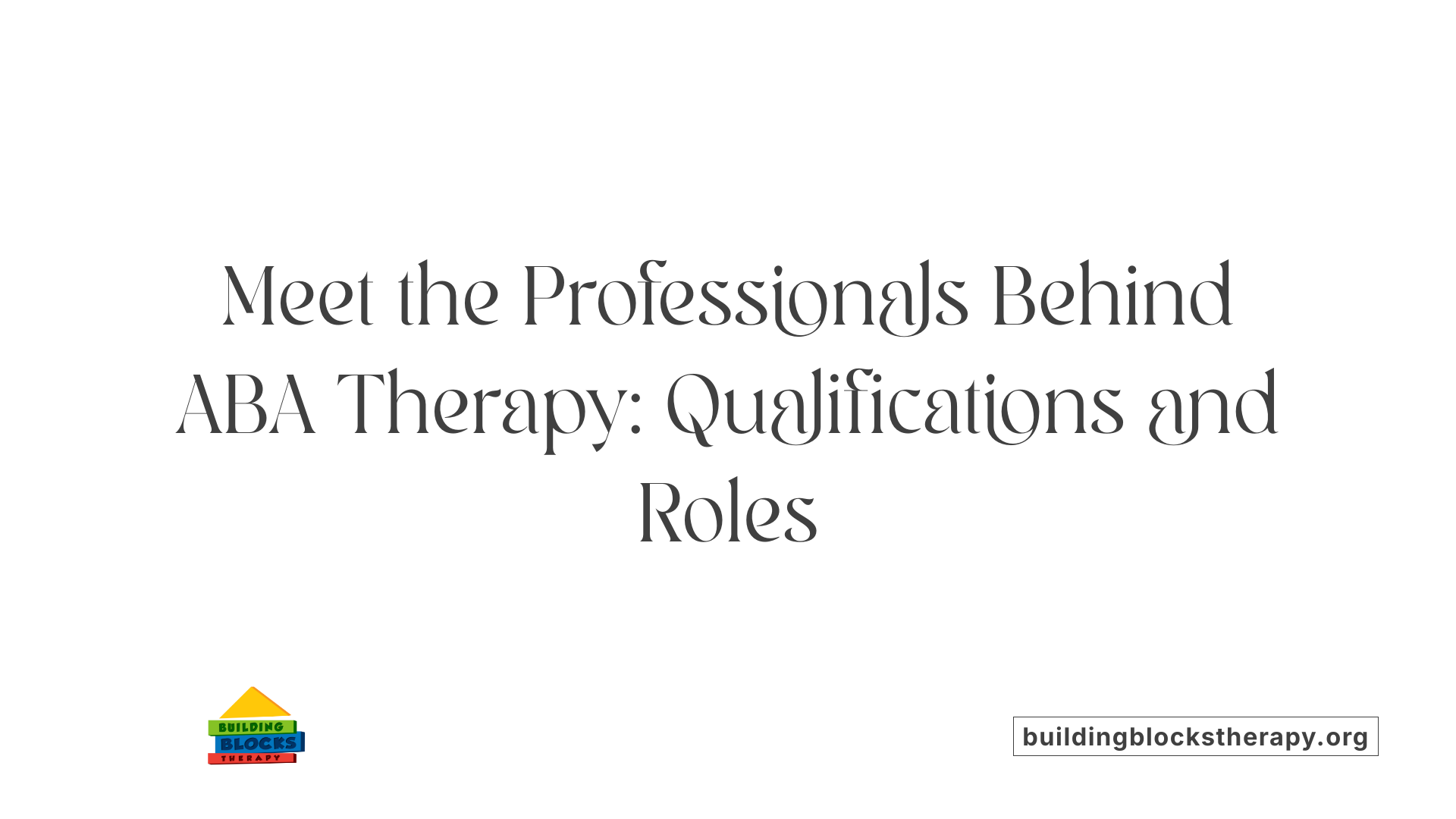
Who provides ABA therapy and what qualifications do they have?
ABA therapy is typically delivered by a collaborative team of professionals, each bringing specialized education and training to support individuals with autism.
Board Certified Behavior Analysts (BCBAs) are central to this team. They hold at least a bachelor's degree in psychology, education, or related fields, with many completing master’s level coursework in applied behavior analysis. To become certified, BCBAs must undergo extensive postgraduate training, complete between 1,500 to 2,000 hours of supervised practical experience, and pass a rigorous certification exam administered by the Behavior Analyst Certification Board (BACB). Maintaining certification also requires ongoing education to ensure up-to-date knowledge of best practices.
In addition to BCBAs, licensed therapists and behavioral technicians play a key role. Therapists often have degrees in related health or educational disciplines and receive specialized instruction on ABA methodologies, focusing on implementing positive reinforcement and behavior modification techniques. Behavioral technicians, who work under supervision, receive focused training to carry out ABA interventions effectively and ethically.
The broader support team may include speech-language therapists, occupational therapists, and physical therapists. These allied professionals complement ABA therapy by addressing speech, motor skills, and sensory integration, fostering overall independence and communication.
Together, this multidisciplinary team combines formal education, certification, and hands-on experience to ensure safe, effective, and individualized ABA therapy services.
Core ABA Techniques Applied to Teaching Turn-Taking

What techniques are used in ABA therapy for autism?
Applied Behavior Analysis (ABA) therapy uses several effective techniques to teach turn-taking, a vital social skill often challenging for children with autism.
Discrete Trial Training (DTT)
DTT breaks down the turn-taking process into small, clear steps. For example, it teaches a child to wait for their turn, recognize cues, and respond appropriately in a structured setting. Each step is taught systematically until mastery.
Modeling Behavior
Modeling plays a crucial role. Therapists or peers demonstrate turn-taking during play or conversation. Children observe and imitate these behaviors, helping them understand and perform the desired actions.
Visual Aids and Prompts
Visual cues like photos or symbols with phrases such as "my turn" and "your turn" help children grasp abstract concepts. Additionally, timers with visual components support older children in managing turn lengths.
Reinforcement Strategies
Positive reinforcement strengthens turn-taking behaviors. Praising children immediately after they take turns or providing preferred items encourages repetition. Gradually, this motivates more natural and consistent use of turn-taking.
Prompt Fading for Independence
Initially, prompts (verbal or gestural) guide the child. Over time, these prompts are faded to encourage independent turn-taking. This helps children generalize the skill across different people and environments.
These core ABA strategies create a structured, supportive learning environment that builds turn-taking skills effectively, fostering communication and social interaction in children with autism.
Evidence Supporting ABA’s Effectiveness in Social Development and Turn-Taking
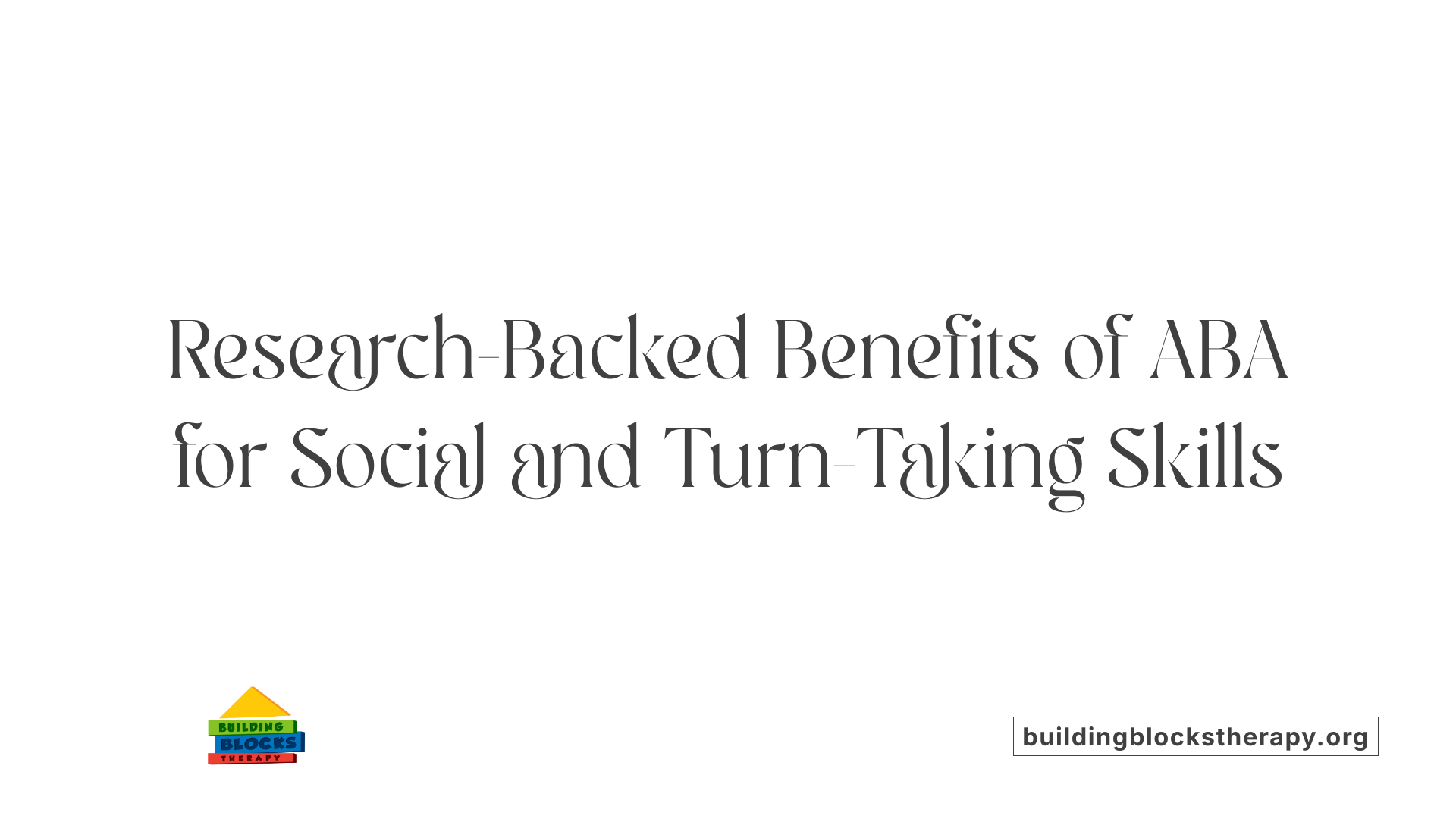
What evidence supports the effectiveness of ABA therapy for autism?
Applied Behavior Analysis (ABA) therapy is widely recognized as a proven intervention for individuals with autism spectrum disorder (ASD). Numerous research studies and meta-analyses show consistent and meaningful improvements in communication, social skills, language, and adaptive behaviors, including crucial social development areas like turn-taking.
Early intervention using ABA programs, often sustained over periods from 12 to 24 months, is particularly beneficial. Children with more severe initial challenges or lower adaptive functioning tend to make especially notable gains. ABA’s structured yet flexible teaching methods help children learn and generalize important social skills across multiple environments, reinforcing behaviors in natural settings to promote independence.
Despite challenges like discontinuation of therapy or differences in service quality in some community programs, the overall body of evidence strongly supports ABA’s effectiveness. This is reflected in endorsements from leading professional organizations such as the American Psychological Association and the Behavior Analyst Certification Board.
Through techniques like social stories, modeling, visual supports, and reinforcement, ABA fosters essential skills such as polite greetings, asking for help in diverse settings, turn-taking, and emotion regulation. These skills not only improve social competence but also enhance participation and inclusion in daily life.
The evidence clearly establishes ABA therapy as the most extensively studied and evidence-based approach for promoting social development and communication skills in children with autism, contributing positively to their long-term outcomes.
Practical Strategies to Encourage Turn-Taking in Everyday Contexts

Using Simple Language Cues Like 'My Turn' and 'Your Turn'
Effective communication during turn-taking can be fostered with straightforward verbal cues. Phrases such as "my turn" and "your turn" help clarify whose turn it is and support understanding in a concrete, accessible way, especially for children with autism. This verbal labeling reduces confusion and encourages participation.
Incorporation of Visual Aids and Timers
Visual aids like photos or symbols paired with verbal cues enhance comprehension. For older children, timers with visual components serve as helpful tools to indicate when their turn begins and ends, supporting patience and fairness in social interactions. These tools provide clear, consistent signals that assist in regulating play and communication.
Role of Social Stories and Modeling
Social stories are powerful in teaching the concepts of sharing and turn-taking by breaking down social interactions into understandable narratives. Modeling turn-taking behaviors during interactions and play allows children to learn through imitation, seeing concrete examples of appropriate social exchanges.
Use of Culturally Significant Tools Like Talking Sticks
Introducing culturally meaningful tools such as talking sticks can promote patience, respect, and structured turn-taking. The talking stick serves as a physical signal that designates the speaker, offering a tactile and visual reminder of whose turn it is to communicate, thereby enhancing social order.
Learning Through Play Activities
Engaging children in play activities like board games (Ker Plunk, Candyland), building block towers, or rolling balls back and forth naturally incorporates turn-taking lessons. These playful interactions provide enjoyable, real-life practice for sharing turns and understanding social rules, making learning engaging and effective.
Integrating Multidisciplinary Approaches to Support Social Interaction
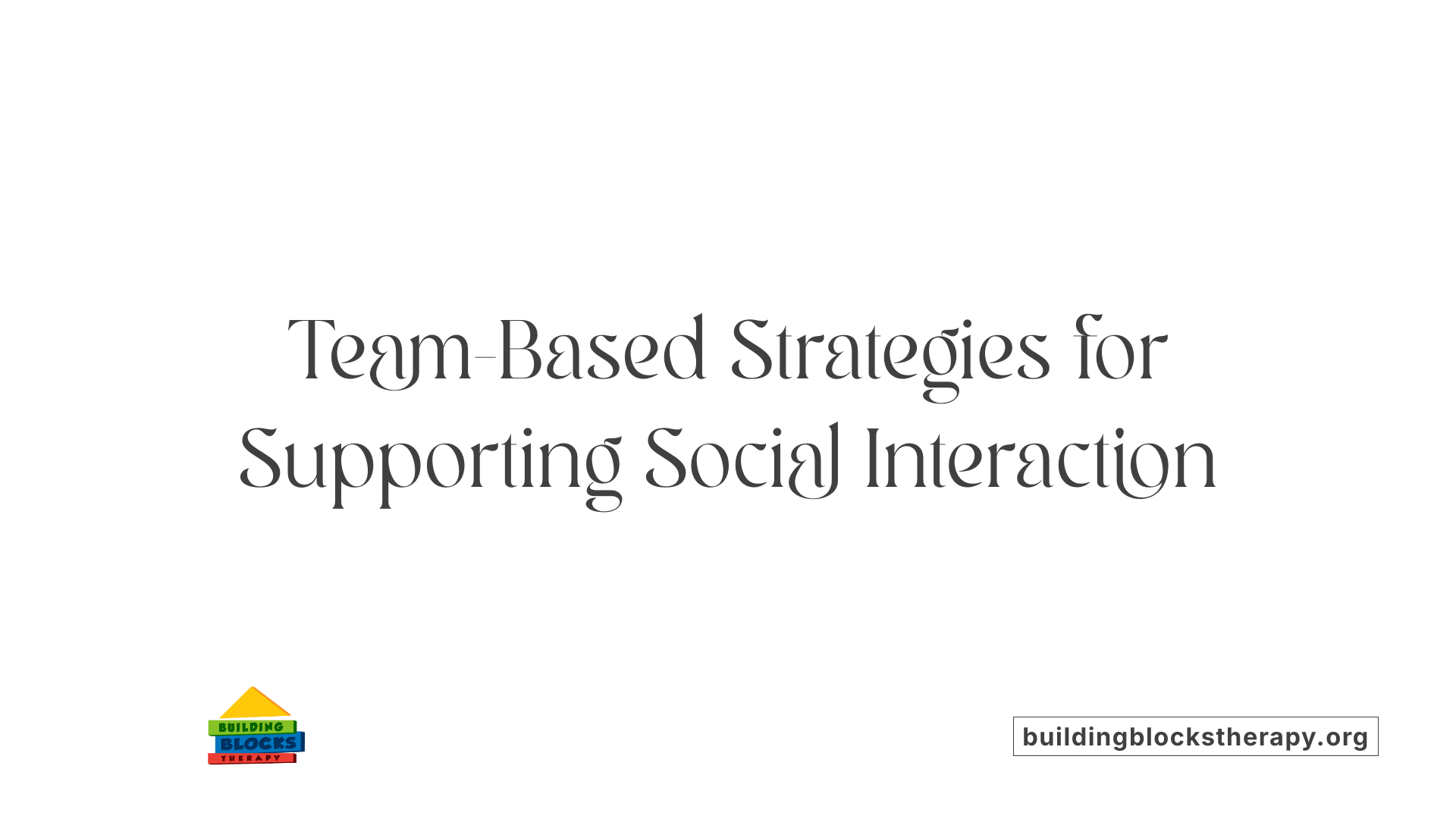
Role of speech-language, occupational, and physical therapists
Professionals such as speech-language therapists, occupational therapists, and physical therapists play a crucial role in enhancing the communication and motor skills of children with autism. Speech-language therapists focus on developing foundational communication abilities, which are essential for effective social interaction. Occupational therapists support sensory integration and daily living skills, helping children better participate in social environments. Physical therapists contribute to improving motor skills that facilitate participation in group activities and play.
Visual schedules and structured routines
The use of visual schedules and structured routines reduces anxiety and supports behavior management for children with autism. These tools provide clear expectations for social settings and daily activities, fostering a predictable environment that helps children focus on learning social skills. Providing warnings before changes in routines and using visual aids to interpret emotions further aid in managing social interactions.
Reinforcing social interaction through peer modeling
Peer modeling is a powerful strategy to encourage social engagement. Pairing students with peers who exhibit appropriate social behaviors offers natural opportunities for learning. Structured activities, such as small lunch groups using topic boxes, facilitate interaction in a manageable setting. Positive social behaviors are reinforced with specific praise, breaking interactions into small, achievable components that build confidence and competence.
Teaching empathy and recognizing social cues
Teaching empathy through recognizing feelings and non-verbal cues is vital for social understanding. Tools like social narratives and social cartooning clarify social rules and expectations. By simplifying complex interactions, these approaches help children interpret social cues and respond appropriately, fostering greater social reciprocity.
Use of social narratives and social cartooning
Social narratives break down social situations into manageable segments, making social rules understandable for children with autism. Social cartooning visually represents social interactions and expectations, enhancing comprehension and aiding memory. These techniques facilitate learning in naturalistic settings and improve social competence through repeated practice.
Generalizing Turn-Taking Skills Across Settings and People

Practicing Turn-Taking With Multiple People and Settings
To help children with autism generalize turn-taking skills, it’s essential to practice these skills with various individuals across different environments. Using familiar faces like family members and unfamiliar ones such as peers or therapists encourages flexibility. Settings can range from home and school to community locations, giving children ample opportunity to apply turn-taking naturally.
Embedding Turn-Taking Into Daily Routines
Integrating turn-taking moments into daily activities promotes consistent use. Simple routines like meal times, playtime, or classroom interactions can become opportunities to practice waiting, sharing, and responding sensitively. Embedding these skills daily helps children recognize the social importance of taking turns.
Using Natural Reinforcers to Strengthen Skills
Reinforcement that naturally follows the turn-taking activity — such as receiving a desired toy after waiting for one’s turn — motivates children effectively. These natural consequences make learning meaningful and increase the likelihood that turn-taking will be repeated in real-life situations.
Gradual Variation of Instructions and Prompts
Starting with clear, consistent cues like "my turn" and "your turn," gradually introducing variations supports flexible responding. Prompts should be faded over time to foster independence, allowing the child to initiate and maintain turn-taking without relying on constant reminders.
Creating Visual Supports to Aid Understanding
Visual cues such as photos, symbols, or timers paired with verbal instructions help children comprehend turn-taking sequences. Tools like a talking stick or visual timers provide concrete signals about whose turn it is and when a turn ends, making abstract social rules more accessible.
By combining these strategies, children with autism can successfully apply turn-taking across people, places, and activities, building essential communication and social interaction skills.
Fostering Independence and Social Competence through Turn-Taking
Encouraging turn-taking in children with autism is a vital step towards enhancing their social communication and overall independence. Through Applied Behavior Analysis therapy, with its individualized, evidence-based techniques, and a collaborative multidisciplinary approach, children can learn, practice, and generalize this essential skill. Incorporating visual supports, modeling, play, and structured routines provides meaningful and natural opportunities for growth. As research continues to endorse ABA’s effectiveness, caregivers and professionals are equipped to empower children with autism to engage more effectively in social interactions and build lasting relationships.
References
- Helping Your Child Use New Skills in Different Places
- Strategies for Autism Spectrum Disorder
- 6 Strategies To Teach Your Child Turn-Taking - Jenny & Andy
- Autism and Social Skills Development
- 4 Steps to Better Social Skills in Autistic Kids
- Patient Outcomes After Applied Behavior Analysis for ...
- The effectiveness of applied behavior analytic interventions ...






